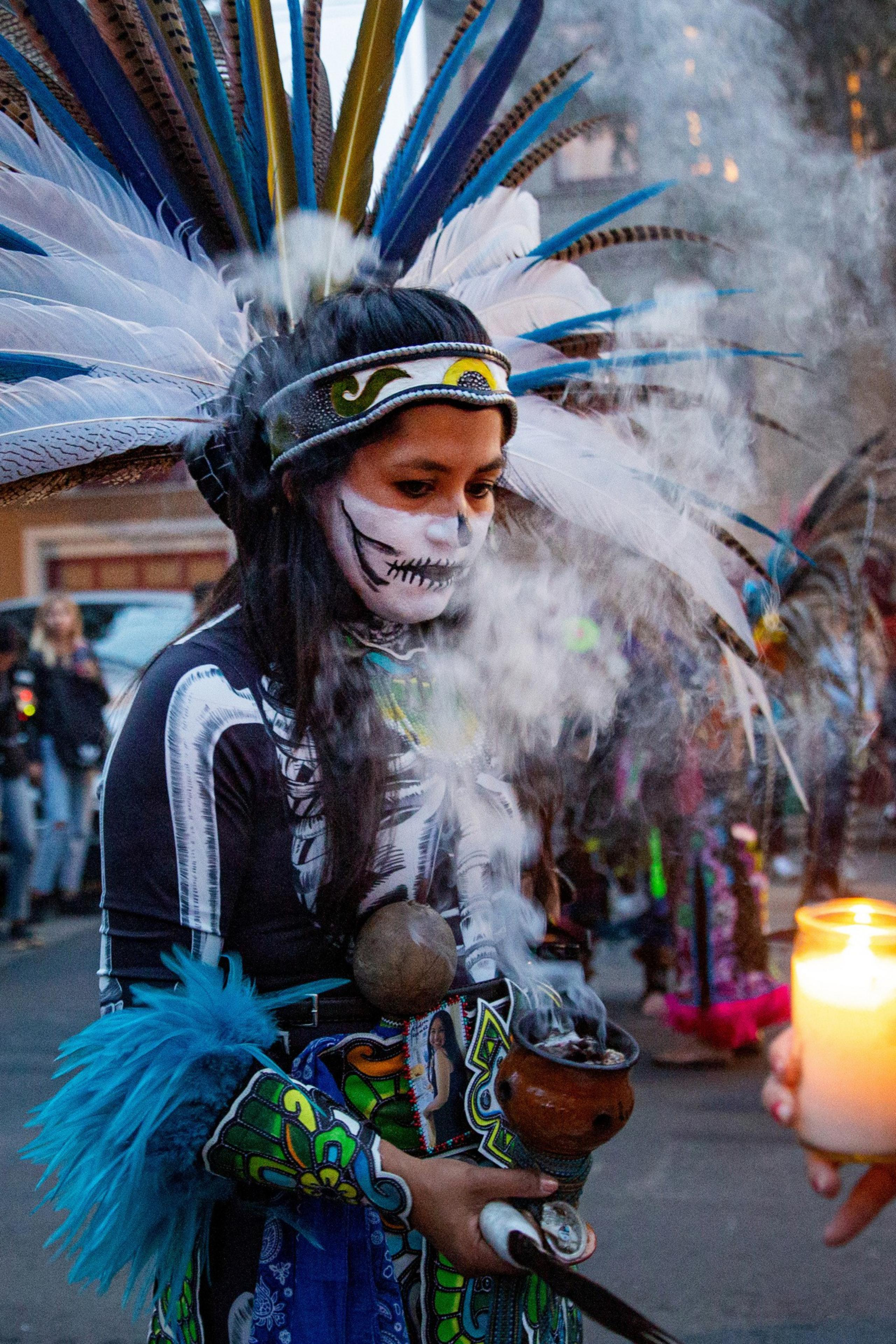Sage wafted and drums pulsated through San Francisco’s Mission District Thursday evening as droves of people lined the streets for the 42nd annual Dia de los Muertos march.
Dia de los Muertos, or Day of the Dead, is the traditional holiday celebrated by the Latino community in which it is believed the spirits of the departed live on through altars built by grieving loved ones. It is typically celebrated with marigold flowers, sugar skull “calaveras” and sweet bread.


The community procession, led by Aztec dancers, made its way from 22nd and Bryant streets to the Mission Cultural Center before heading up Mission Street and returning to the starting point.
Marchers dressed themselves with skull face paint and carried brightly colored banners and ofrendas, or offerings, constructed to honor loved ones who died.
READ MORE: Día de los Muertos 2023: 9 Ways To Celebrate in San Francisco, Oakland
Nancy Abdul-Shakur works as a community organizer with Horizons Unlimited—a nonprofit dedicated to Latino youth and youth of color. She stood with a group of young people holding ofrendas dedicated to other young people who died in San Francisco.

Remembering those who have died, she said, is a way for young people of color to strengthen their resistance to systemic hardships they face while living in San Francisco.
“When the system takes one of our young people, we continue to push forward, and this work is really important in what we do,” she said. “Honoring them is part of that work, and we honor them through the legacy that was left behind.”
For another Horizons employee, Vic Aguirre, it was his first day working with the Mission-based organization and his first time participating in the march.
“It’s a perfect first day on the job,” he said. “I came to meet up with the processional, and somebody asked me to carry the banner. It is all community around here, and that’s how it happens here, so I just wanted to lend a good hand.”

Aguirre moved to the Mission in 2013 and said this year he marches to honor his cousin, Adrian Pantoja—who was killed in a shooting in Vallejo that same year—as well as Jared Huey and Sean Monterrosa, who were killed by Vallejo police.
“Traditionally, what we do is building altars and commemorating their lives—that they are still living in the next world,” he said. “The best way to honor their memory is to live right. Live to the fullest to do your best, and follow your heart. When we do that, we heal ourselves and our ancestors.”
Jose Guadalupe Regla, who moved to the Mission in 2000 from Jalisco, Mexico, said the importance of the event isn’t just remembering loved ones who died but representing one’s family in the processional.
“Every year that I’ve been here in the Mission, I’ve enjoyed coming to this event,” he said, adding that the march is similar to those in Mexico. “For me, it is important because we all have people we love who aren’t here anymore. Today, I’m marching thinking about my parents and my brother.”







